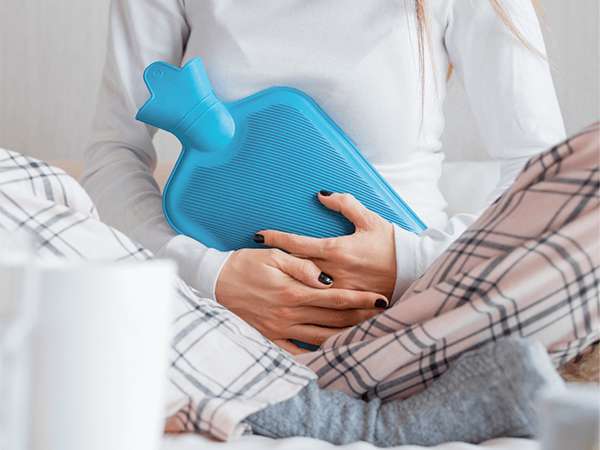Endometriosis

Introduction
Endometriosis is a chronic and often painful condition that affects millions of women worldwide. Despite its prevalence, many people are unaware of what endometriosis is, how it manifests, and the impact it can have on a person’s life. This blog aims to provide comprehensive information about endometriosis, shedding light on its symptoms, causes, diagnosis, and treatment options. By raising awareness and understanding, we hope to support those affected by endometriosis and foster a more informed community.
What is Endometriosis?
Endometriosis is a condition where tissue similar to the lining inside the uterus, known as the endometrium, starts to grow outside the uterus. These growths, often called endometrial implants, can occur on the ovaries, fallopian tubes, outer surface of the uterus, and other organs within the pelvic region. In rare cases, endometrial tissue can be found beyond the pelvic organs.
Symptoms of Endometriosis
Endometriosis can cause a wide range of symptoms, and their severity can vary significantly from one person to another. Common symptoms include:
- Pelvic pain: This is the most common symptom and often correlates with the menstrual cycle. Pain can also occur during ovulation, intercourse, bowel movements, or urination.
- Menstrual irregularities: Many women with endometriosis experience heavy periods (menorrhagia) or bleeding between periods (menometrorrhagia).
- Chronic fatigue: Persistent tiredness that isn’t relieved by rest is a frequent complaint among those with endometriosis.
The variability of symptoms can make endometriosis difficult to diagnose, as some women may experience severe symptoms while others have mild or no symptoms at all. This inconsistency often leads to delays in seeking medical help and receiving a correct diagnosis.
Causes and Risk Factors
The exact cause of endometriosis is not fully understood, but several theories exist. These include:
- Retrograde menstruation: This theory suggests that menstrual blood flows backward through the fallopian tubes into the pelvic cavity instead of leaving the body.
- Embryonic cell transformation: Hormones such as estrogen may transform embryonic cells into endometrial-like cell implants during puberty.
- Surgical scar implantation: After surgeries like a hysterectomy or C-section, endometrial cells may attach to the surgical incision site.
Risk factors for endometriosis include:
- Never giving birth: Women who have not had children are at a higher risk.
- Early menarche: Starting menstruation at an early age increases the risk.
- Menstrual cycles: Short menstrual cycles (less than 27 days) and heavy menstrual periods lasting longer than seven days are associated with a higher risk.
Understanding these causes and risk factors is vital for early detection and management of endometriosis.
Diagnosis
Diagnosing endometriosis can be challenging due to the variability of symptoms and their overlap with other conditions. However, a combination of medical history, physical exams, and imaging tests can help in the diagnosis. Here are the common steps involved:
- Medical History and Symptom Discussion: The first step in diagnosing endometriosis is a thorough discussion of symptoms and medical history. Your doctor will ask about the nature, timing, and severity of your pain, menstrual cycle details, and any other related symptoms.
- Imaging Tests:
- Ultrasound: A transvaginal or abdominal ultrasound can help identify ovarian cysts associated with endometriosis. However, it cannot definitively diagnose the condition.
- Magnetic Resonance Imaging (MRI): An MRI provides detailed images of the body’s internal structures and can help in planning surgical treatment.
Early diagnosis is crucial for managing endometriosis effectively and preventing complications such as infertility and chronic pain. If you suspect you have endometriosis, consult with a healthcare professional for a thorough evaluation.
Treatment Options
Endometriosis treatment aims to relieve symptoms and improve quality of life. The best approach depends on the severity of the symptoms, the desire for pregnancy, and the patient’s overall health. Here are the primary treatment options:
Medications:
- Pain Relievers: Nonsteroidal anti-inflammatory drugs (NSAIDs), such as ibuprofen and naproxen, can help manage pain and reduce inflammation.
- Hormonal Therapies: Hormonal treatments aim to reduce or eliminate menstruation, thereby limiting the growth of endometrial tissue. Options include:
- Birth Control Pills: Combination estrogen-progestin or progestin-only pills help control hormone levels and reduce endometrial growth.
- Gonadotropin-Releasing Hormone (GnRH) Agonists and Antagonists: These medications reduce estrogen levels and create a temporary menopause-like state, shrinking endometrial tissue.
Living with Endometriosis
Living with endometriosis can be challenging, but there are strategies and resources available to help manage the condition and improve quality of life:
Coping Strategies:
- Pain Management: Use a combination of prescribed medications, over-the-counter pain relievers, and alternative therapies like acupuncture or massage.
- Mental Health: Seeking therapy or counseling can be beneficial for dealing with the emotional and psychological impact of endometriosis. Cognitive-behavioral therapy (CBT) and mindfulness techniques can help manage chronic pain and stress.
Support Systems and Resources:
- Family and Friends: Educating those close to you about endometriosis can foster understanding and support.
- Online Communities: Joining online forums and support groups can provide a sense of community and shared experiences. Websites like Endometriosis.org and the Endometriosis Foundation of America offer valuable resources and support networks.
- Professional Help: Consulting with pain specialists, reproductive endocrinologists, and dietitians can offer specialized care and advice tailored to your condition.